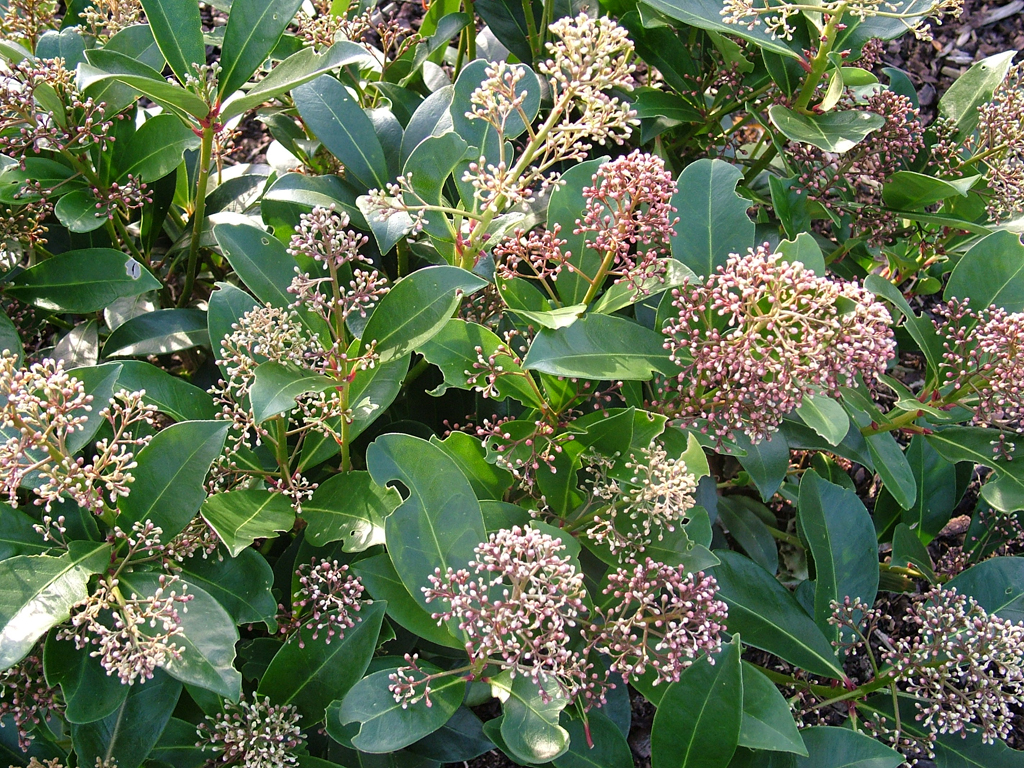Skimmia japonica 'Fragrans' (m)

skimmia 'Fragrans'
A small, bushy evergreen shrub forming a low dome with aromatic, dark green, obovate leaves to 10cm in length. Dense clusters of small, fragrant white male flowers appear in the spring
Size
Ultimate height
0.5–1 metresTime to ultimate height
10–20 yearsUltimate spread
0.5–1 metresGrowing conditions
Moisture
Moist but well–drainedpH
Acid, Alkaline, NeutralColour & scent
| Stem | Flower | Foliage | Fruit | |
| Spring | White | Green | ||
|---|---|---|---|---|
| Summer | Green | |||
| Autumn | Green | |||
| Winter | Green |
Position
- Full shade
- Partial shade
Aspect
South–facing or North–facing or West–facing or East–facing
Exposure
Exposed or Sheltered Hardiness
H5Botanical details
- Family
- Rutaceae
- Native to GB / Ireland
- No
- Foliage
- Evergreen
- Habit
- Bushy
- Potentially harmful
- Fruit are ornamental, not to be eaten. Wear gloves and other protective equipment when handling. Pets: Fruit are ornamental, not to be eaten - see the HTA guide to potentially harmful plants for further information and useful contact numbers
- Genus
Skimmia are compact evergreen shrubs with simple, aromatic leaves and terminal panicles of small white or yellowish flowers followed, on fertilised female plants, by shiny red berries; most have male and female flowers on separate plants
- Name status
Accepted
How to grow
Cultivation
Grow in moderately fertile, moist but well-drained humus-rich soil in shade. Full sun may be tolerated when planted in damp soil. Also tolerant of atmospheric pollution and neglect. May become chlorotic if over-exposed to sun or on poor dry soil
Propagation
Propagate by semi-hardwood cuttings in late summer
Suggested planting locations and garden types
- Patio and container plants
- City and courtyard gardens
- Cottage and informal garden
- Wildlife gardens
- Low Maintenance
- Flower borders and beds
- Hedging and screens
Pruning
Pests
May be susceptible to scale insects, and to vine weevil when grown in containers
Diseases
May be susceptible to Phytophthora and honey fungus
Get involved
The Royal Horticultural Society is the UK’s leading gardening charity. We aim to enrich everyone’s life through plants, and make the UK a greener and more beautiful place.
